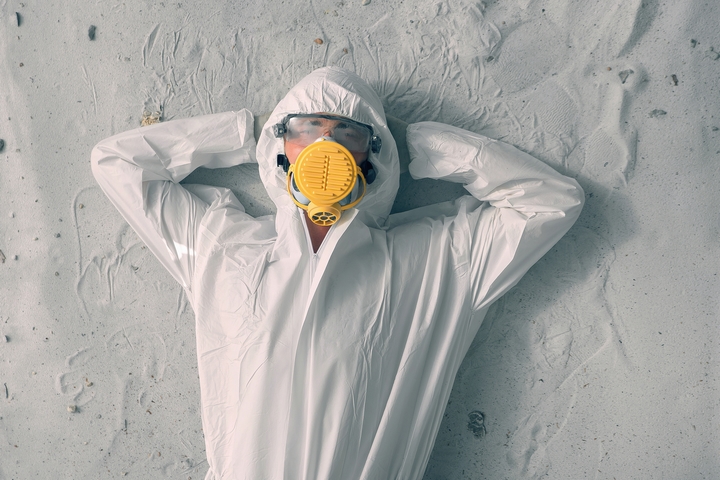8 Fashionable Types of Construction Rain Gear

The ideal construction rain gear should be waterproof, mobile and lightweight, heavy-duty, resilient, water-resistant, and functional. Your choice depends on the circumstances you are working in.
Working in construction management is both exciting and a challenge, especially when it’s raining in the construction site. However, wearing the right gear during these extreme conditions is critical in ensuring you stay warm and comfortable as you work. Conventional rain gear includes boots, pants, waterproof jackets, caps, smocks, overtrousers, vests, and many others.
The goal when selecting construction rain gear is to pick one that will keep you warm while also allowing you to move around with utmost ease. It should also be durable, lightweight and functional enough to withstand the rigours of a construction site.
As a rule, construction rain gear should make it easy for a construction worker to perform their tasks with the utmost ease. The following are eight fashionable types of construction rain gear:
1. Waterproof Raincoats

This rainproof jacket is constructed from 100% soft, breathable polyester. It’s lightweight and durable and features a hood and a zipper, and expandable hand-warmer pockets. It also has a parka cut to ease movement, and two chest pockets and adjustable hooks for convenience at the construction site.
2. Construction Rain Jackets

Construction rain jackets offer 100% waterproofing. They are lightweight and gives maximum mobility. A good rain jacket design allows you to move freely at a construction site so you can carry, lift, and stake without impediment.
Rain jackets are available in half and full-sleeve designs depending on your preference. If you prefer keeping your arms free, the half-sleeve coat provides you with full upper-body protection. Besides, it has the added benefit of flexibility.
3. Construction Pullovers

Construction pullovers are lighter than construction rain jackets. Their zip does not extend to the bottom, giving you added versatility around the waist and hip, especially if your job requires a lot of heavy lifting.
4. Rain Suits

A rain suit is made of heavy-duty material. It’s a combo of 30% polyester, and 70% polyvinyl. Its lamination is 0.42mm thick. It features large cargo pockets and storm flaps, J-hook suspenders, full bib overalls and full-cut shoulders. Rain suits are both waterproof and windproof.
5. Rubber Bomber Jackets

This 100% waterproof jacket is made using polyester nylon fabric. It’s a fluorescent jacket with high visibility specially designed for night time work. However, its daytime visibility is excellent due to its 2-inch reflective silver tapes around the chest, shoulders and arms.
It’s fitted with a radio pocket and slash front pockets complete with closures. It’s got a quilted lining that makes it warm and soft. It also features elasticized cuffs for a snug fit.
6. Smocks

When working at a construction site in heavy rains and you won’t need to move around a lot, a heavy-duty smock is recommended. Smocks are thick, long and heavy. They provide better protection from the wind, cold, and the rain beside the fact that they also cover most of your body.
You can pair them with shorts to protect the top half of your body while at the same time being able to move under challenging conditions. Smocks made of a double layer of PVC provide superior insulation from the cold. The ideal is a smock that’s cleverly distributed, especially around the hip and waist areas.
7. Vests

Vests are ideal for cold but not extremely wet environments. Typical vests are lightweight, portable, and practical. They should be small and light for carrying in a rucksack, but thick and warm enough to keep your upper body warm.
Some construction workers prefer using vests even in wet conditions. Just like some people are daring enough to wear smocks with shorts, some don’t mind wearing vests, even in the pouring rain, especially if they have to move around a lot.
Vests give you enhanced mobility around your arms while keeping the upper part of your body dry, warm, and comfortable. They are ideal for those unpredictable spring days where it’s rainy one moment and sunny the next. Free tip: get a vest that’s fluorescent or reflective.
8. Overtrousers

These are extremely practical in unpredictable weather. Let’s say you are working at a construction site, and all of a sudden, it starts pouring. Just grab your lightweight overtrousers and slip into them. This means you don’t have to remove whatever you are wearing. Just jump into the overtrousers. Although they are lightweight, they keep you warm inside. In an emergency, you can wear them on their own.
However, the PVC or the inner neoprene might feel a little uncomfortable for your skin. Overtrousers feature adjustable cuffs that protect the upper part of your boots, the bottom of your trousers, and your ankles. They have full waterproofing capabilities and are lightweight. While not made to keep you warm, they keep you moving and dry.



